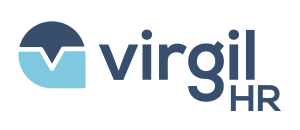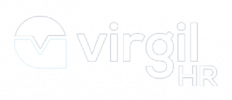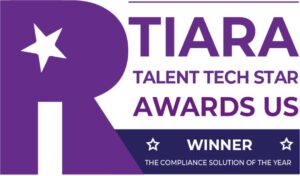After finally hiring the right person, your work has only just begun. It’s now time to make your new employee feel welcome, get their paperwork in order, teach them the ropes, and help them become productive as soon as possible.
To make this happen, you’ll need a new employee onboarding checklist. This checklist will ensure you don’t miss a beat and remove much of the stress and ambiguity of getting new workers off to a good start.
With that in mind, here’s what you should know about what a new employee onboarding checklist is, why it’s important, and what you should focus on when creating one for your company.
What Is an Onboarding Checklist?
An onboarding checklist is a logistical aid that you can use to guide your efforts whenever you have a new employee. Even if you’ve onboarded hundreds of employees, it’s well worth your time to establish and ensconce a definitive checklist that ensures each new employee receives the same quality onboarding experience.
Each element of the checklist will typically fall into one of the following categories:
- Ensuring compliance with company/legal regulations
- Clarifying job expectations
- Building the confidence of the employee
- Establishing a connection between the employee and employer
- Imparting the culture of the organization
Because this checklist accomplishes so many diverse goals, you can expect it to contain a wide variety of elements, including orientation information, training schedules, legal documents, financial forms, brochures, and even swag.
Why Is a New Hire Onboarding Checklist Important?
Onboarding a new hire is one of the most critical factors for an employee’s productivity and job satisfaction at a company. This is because an employee’s early days with a company carry the most risk, as workers are much more likely to quit within the first few months.
Unfortunately, this turnover can significantly impact your bottom line: Recent studies show that 20-30% of new hires leave within their first year, with most departures occurring within the first 90 days. Additionally, the cost of replacing an employee can range from 50% to 200% of their annual salary, depending on the role and industry. This means that an onboarding checklist is not just a helpful tool—it’s an essential procedure to protect your company’s resources, retain talent, and drive future success.
This means that an onboarding checklist should not be viewed as an optional step but rather a mandatory procedure that protects a company’s resources and ensures future success.
What Do You Need to Know Before Creating a New Employee Onboarding Checklist?
While HR may lead the onboarding process, building an effective onboarding checklist should start with a conversation that includes HR, the legal team, IT, senior management, and any other stakeholders who can shed light on the ideal onboarding experience.
It’s in this discussion that you should aim to answer several questions, including:
- How long should onboarding last?
- What does the new employee need to know about their work and the company culture?
- What access, cards, materials, or equipment will the employee need on day one?
- What goals do you want to set for the new hire?
- How will you gather feedback to improve the process?
- What is the employee’s training plan?
Once you’ve answered these questions, you can begin sculpting a checklist that addresses every facet of the answers you uncover. While it can seem like a lot, it’s important to be comprehensive in your approach to proactively address any concerns the new employee may have.
How Do You Build an Onboarding Checklist?
A new employee onboarding checklist may vary by company, but it should cover at least the following areas:
- Providing a new-hire packet
- Letting the new hire know what to expect on the first day
- Setting up hardware and software and providing the necessary access
- Scheduling orientation and training
- Making a list of any coworkers or managers the employee should meet
- Preparing a tour of the facilities
- Assigning a mentor
- Setting SMART (specific, measurable, attainable, relevant, and time-bound) goals
- Considering any questions the new hire might have
- Scheduling a follow-up meeting with the new worker
Hybrid and Remote Work Considerations
In today’s increasingly flexible work environments, onboarding processes must adapt for hybrid and remote employees. Ensure that your checklist includes virtual orientations, remote setup of hardware and software, and access to all the necessary tools. Schedule team introductions via video calls to create connection, and offer clear instructions on how to access company resources remotely. A strong remote onboarding process ensures that your employees feel supported and engaged, no matter where they are working from.
However, there’s one more very important step you must include in your checklist: ensuring your employee fills out all required paperwork. This is arguably one of the most important parts of onboarding, as it’s the part that keeps your company compliant with state and federal laws.
These documents can include (but are not limited to):
- Federal tax forms (W-4 for employees and W-9 for contractors)
- State tax forms
- I-9 right-to-work form
- ACH direct deposit forms
- An acknowledgment that the worker has read the handbook
- Nondisclosure, non-compete, and confidentiality agreements
- Consent agreements for alcohol and drug testing
- Benefits information and documentation
Given the importance of this step and the potential consequences of errors, it’s wise to rely on a dedicated HR compliance solution that can provide you with all the documents you need for a smooth onboarding experience.
Regularly Review and Update Your Checklist
As company needs, regulations, and employee expectations evolve, it’s essential to regularly review and update your onboarding checklist. This ensures that your process stays compliant with current laws and continues to meet the needs of both your organization and new hires. Scheduling an annual review of your checklist can help you proactively address any new compliance requirements or organizational changes.
Get the Documents You Need
Your checklist should help your new hire feel comfortable and set them up for success, but it’s vital that you also include all required paperwork and have the employee fill it out. While you can try to track down each individual form, there’s a better way.
VirgilHR can provide you with easy-to-find checklists, forms, policies, templates, and so much more that you can use to ensure the onboarding experience is a smooth one that meets all regulatory requirements.
VirgilHR’s tech tool automates the onboarding process for you by taking you step-by-step through each phase of onboarding to ensure you’re compliant. This way, you can successfully onboard your new hires, empower them to succeed, and remain in compliance with state and federal law. Learn more about our handbook builder here.
Stay ahead of the curve with VirgilHR’s comprehensive onboarding solutions. Let us handle the complexities so you can focus on welcoming your new hires! Schedule a demo today!






